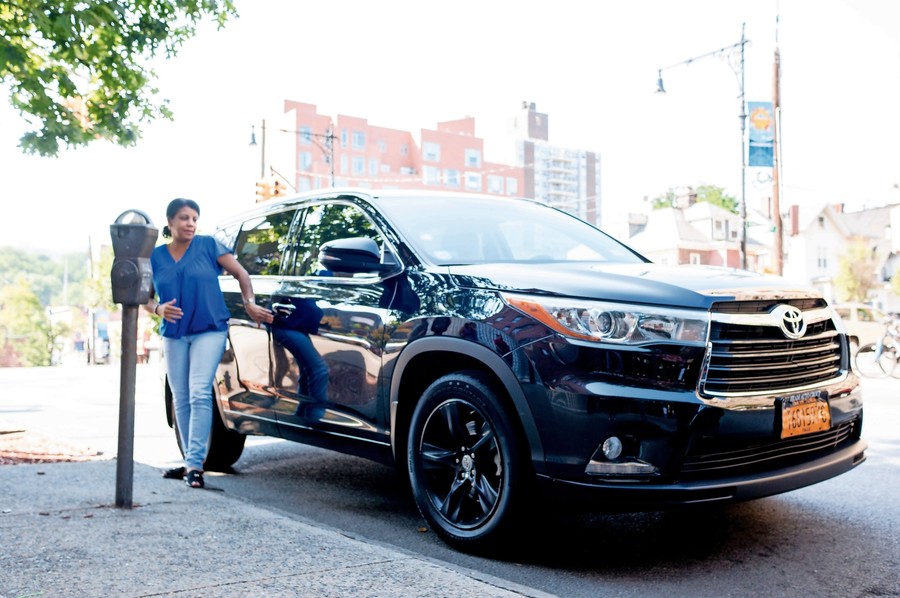Cabbies find niche as Uber, Lyft loom large
Ricardo Jimenez is in his car each morning at 6 sharp, fastening his seat belt before many Riverdalians have even considered getting out of bed or taking a sip of their first cup of coffee.
As he backs out of the parking spot near his home by Montefiore Medical Center, he knows he’ll spend the next 12 hours in the leather driver’s seat as he travels the northwest Bronx chauffeuring passengers to their destinations. If he has free time between rides, he might take an hour break at some point to stretch his legs.
Jimenez has been a taxi driver since 1997, and has worked for Alltown Car Limo since it opened a service hub at 224 W. 231 St., four years ago. He knows the area so well he rarely needs a navigation system to guide him from place to place.
Like many taxi drivers, he certainly felt the domineering effect of Uber when the tech company came to New York City in May 2011.
The electronic ride-hailing service quickly changed the taxicab industry with technology that allowed passengers to order cars with a simple swipe of their fingertip.
The freedom Uber gives its drivers — like using their own vehicles and picking their own hours — caused many drivers to jump ship from the traditional yellow cab service. But not Jimenez.
“For me, Uber is for new drivers who are (in)experienced,” he said, taking pride in the 20 years he has spent in the business.
While tucked away from the sea of yellow cabs and Uber drivers on Manhattan’s crowded streets, the ride-hailing app has made an intrusion in nestled Riverdale.
According to the Taxi & Limousine Commission, a survey from April to September of 2014 showed Uber had more success in the city’s outer boroughs in places just like Riverdale. In the six-month span, the northwest nook of the Bronx had a 20-times higher average of Uber pick-ups than the city average.
Since Uber drivers are able to choose their own hours, many take on the job part-time or for extra income. As a result, there is an increase in people wanting to obtain a license from the state to operate a taxi.
Anthony Cabrera opened a taxi and limo training center in the Bronx last year, offering classes in defensive driving and customer care. One course even instructs drivers how to provide service for wheelchair-bound passengers.
In the year since the center has been open, Cabrera noticed the vast majority of people he trained were looking to drive for-hire black cars for apps like Uber and Lyft.
“As we move forward, technology is taking the cab industry by storm,” Cabrera said. “It’s like the retail sector — stores like Macy’s and JCPenney are going down while websites like Amazon are going up.”
The change in technology has forced traditional taxi service companies to adapt fast. Antonio Rodriguez, manager of Alltown, said that while the business has been doing “pretty good” in Riverdale despite apps like Uber and Gett, it did require him to make some adjustments.
“At the beginning yes, they destabilized the whole industry,” Rodriguez said. “They put the prices so low they basically killed the business.”
As a result, traditional car service companies had to adapt, and fast. Along with creating an app of their own, Rodriguez formed relationships with community-based organizations that have helped Alltown build a steady client list.
His fleet of about 200 cars regularly drive elderly passengers to and from their doctors appointments, and help people consistently get to their jobs when their office is not easily accessible by bus or subway. He also noted his drivers know the area like the “back of their hands.”
“I guarantee you that you will get a driver that is living and raising a family in the same area that they are working in,” Rodriguez said of Alltown’s service. “In Riverdale, there are tiny little streets that no one has ever heard of, and my drivers know how to get around. They know the shortcuts.”
Annette Rodwell, a dispatcher at Veterans Car Service — formerly known as Bailey Cab Service — agreed with Rodriguez that local taxi companies can find a niche in their neighborhoods, even with the popularity of ride-hailing apps.
The company, which has been a part of the community for the past 40 years, has about 300 cars that are available 24 hours a day. They worked hard to build trust with their clients, she said, and many people use the service for their children or elderly parents.
They also prepare their drivers to work with handicapped and disabled riders.
“It’s more of an intimate experience,” Rodwell said. “It’s like when you go to your favorite bodega and get your coffee in the morning.
“We know people. That’s why Uber and Gett will never totally conquer this side of it.”






